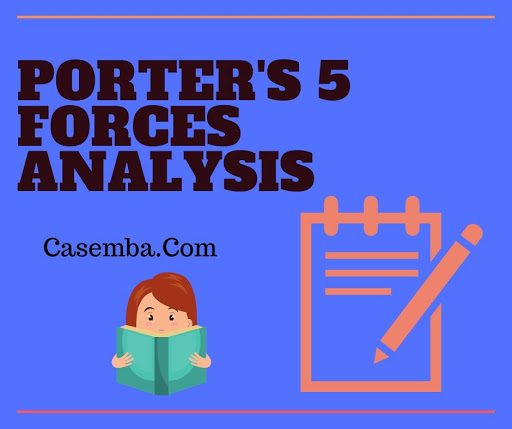Porter's Five Forces of How Global Brands Compete Case Study Analysis
This is not the actual case solution. To get the case solution place your order on the site and contact website support.
Home >> John A Quelch >> How Global Brands Compete >> Porters Analysis
Porter's Five Forces of How Global Brands Compete Case Help
The porter five forces design would assist in getting insights into the Porter's 5 Forces of How Global Brands Compete Case Solution market and determine the likelihood of the success of the alternatives, which has actually been thought about by the management of the company for the function of dealing with the emerging issues connected to the minimizing membership rate of customers.
1. Intensity of rivalry
 It is to inform that the Porter's 5 Forces of How Global Brands Compete Case Help belongs of the multinational entertainment industry in the United States. The company has actually been participated in supplying the services in more than ninety nations with the video as needed, products of streaming media and media company.
It is to inform that the Porter's 5 Forces of How Global Brands Compete Case Help belongs of the multinational entertainment industry in the United States. The company has actually been participated in supplying the services in more than ninety nations with the video as needed, products of streaming media and media company.
The industry where the Porter's 5 Forces of How Global Brands Compete Case Solution has actually been running because its creation has many market players with the substantial market share and increased profits. There is an extreme level of competitors or rivalry in the media and entertainment market, compelling organizations to make every effort in order to maintain the existing clients by means of using services at inexpensive or affordable prices.
Quickly, the strength of competition is strong in the market and it is essential for the company to come up with distinct and innovative offerings as the audience or customers are more sophisticated in such contemporary technology era.
2. Threats of new entrants
There is a high expense of entrance in the media and entrainment industry. The show business requires a large capital quantity as the companies which are engaged in providing entertainment service have bigger start-up expense, which includes:
Legal cost.
Marketing expense.
Distribution cost.
Licensing cost.
On the other hand, the existing entertainment company has actually been thoroughly dealing with their targeted sectors with the particular specialization, which is why the hazard of new entrants is low.
Another crucial aspect is the intensity of competitors within the essential market gamers in the industry, due to which the brand-new entrant think twice while getting in into the market. The technology and trends in the media market are evolving on constant basis, which is adapted by market rivals and Porter's 5 Forces of How Global Brands Compete Case Solution.
3. Threat of substitutes
The danger of replacements in the market pose moderate danger level in media and the entertainment market. The consumer may also engage in other leisure activities and source of information as compared to enjoying media material and online streaming.
4. Bargaining power of buyer
The dynamics of media and show business permits the consumers to have high bargaining power. The profits and sales produced by company are based upon the customers put in diverse locations all around the world. The low cost of changing makes it possible for the customers to look for other media service suppliers and cancel their Porter's 5 Forces of How Global Brands Compete Case Help subscription, thus increasing the service danger. Due to this, the company could not charge high prices for services from the clients, and it should keep the prices method according to client demand, with minimal increase in price.
5. Bargaining power of suppliers
Given that Porter's Five Forces of How Global Brands Compete Case Help has been contending versus the conventional supplier of entertainment and media, it requires to reveal greater flexibility in arrangement as compared to the traditional businesses. The items is innovation based, the dependence of the companies are increasing on continuous basis.
Objectives and Goals of the Company:
In Illinois, United States of America, among the best producer of sensing unit and competitive company is Case Service. The organization is involved in production of broad item variety and advancement of activities, networks and processes for being successful amongst the competitive environment of industry providing it a considerable benefit over competitiveness. The organization's objectives is principally to be the maker of sensing unit with high quality and highly customized organization surrounded by the premium market of sensing unit production in the United States of America.
The goal of the company is to bring reduction in the product costs by increasing the sales unit for every product. The organizational management is involved in determination of potential items to use their consumer in both long term and brief term implies. The organizational strength involves the facility of competitive position within the production market of sensing unit in the United States of America on the basis of 5 pillars that includes consumer care, performance in operation management, acknowledgment of brand name, personalized capabilities and technical innovation.
The company is a leading one and performing as a leader in the sensing unit market of the United States for their personalized services and systems of sensor. Innovation in ideas and product developing and arrangement of services to their consumers are among the competitive strengths of the organization. The company has actually used cross-functional supervisors who are accountable for change and understanding of the company's technique for competitiveness whereas, the company's weak point includes the choice making in regard to the items' removal or retention only on the basis of financial elements. Therefore, the measurement of ROIC is not related to the trade incorporation and concerns of customers.
